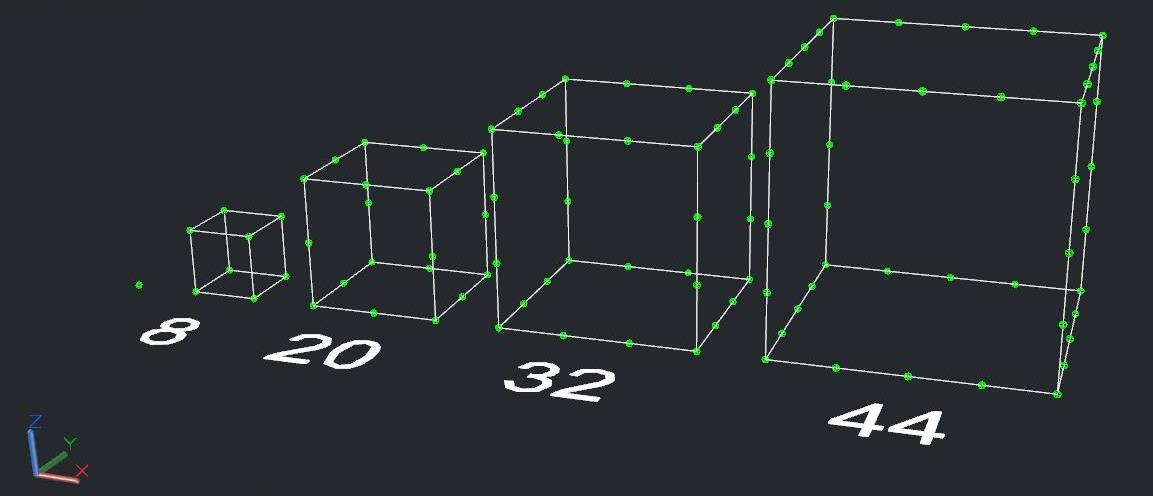What is the general term of this sequence?
I have long been fascinated with sequences, may it be an arithmetic sequence, a geometric sequence, or a general sequence. After a week, I have thought of a sequence where the terms are the number of points in cubes (except for the first term where it is a point). In each consecutive term, the number of points on each edge of the previous cube increases by .
I have attempted to solve for the term of this sequence I have thought of more than months ago, but unfortunately even after many attempts and many methods, I have failed.
Can anyone solve for the general term of ? Is it possible to do so, or does it not have a general term?"

Note: This view is in perspective.
Easy Math Editor
This discussion board is a place to discuss our Daily Challenges and the math and science related to those challenges. Explanations are more than just a solution — they should explain the steps and thinking strategies that you used to obtain the solution. Comments should further the discussion of math and science.
When posting on Brilliant:
*italics*or_italics_**bold**or__bold__paragraph 1
paragraph 2
[example link](https://brilliant.org)> This is a quote# I indented these lines # 4 spaces, and now they show # up as a code block. print "hello world"\(...\)or\[...\]to ensure proper formatting.2 \times 32^{34}a_{i-1}\frac{2}{3}\sqrt{2}\sum_{i=1}^3\sin \theta\boxed{123}Comments
The only hiccup is the first term 1. Otherwise, if we dropped that and went with 8,20,32,44..., the series formula 12n−4 will do. That might be why you're having so much trouble.
If it's really important to include that first term 1, it's still possible but won't be so simple.
Edit: Okay, here it is. This will generate your series, for n=1,2,3,4,5,6... it delivers 1,8,20,32,44,56...
f(n)=25(1−(−1)2n−1)+12n−16
I told you it wouldn't be simple.
Log in to reply
I see that substituting 1 for n in that function will also result in 1. Unfortunately, it does not work for greater positive integers. However, I have noticed that substituting 2, 3, 4, 5, 6, 7, 8, 9 and 10 for n in the function f(n)=12n−16 will give the right value for f(n), respectively.
Log in to reply
The difference between successive terms should be 12, starting with the 2nd and 3rd terms. The only counterexample to that is between the 1st and 2nd term. The formula I have is quite correct, it works.
Log in to reply
I stand corrected, I apologize for my error. I must not have carefully foreseen and analyzed the formula you have given for the general term. Thank you very much, this means a lot to me. Again, my apologies.
May I ask, how did you get this formula?